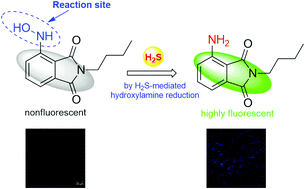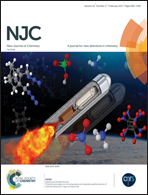A new ESIPT-based fluorescent probe for highly selective and sensitive detection of hydrogen sulfide and its application in live-cell imaging†
Abstract
A new excited-state intramolecular proton transfer (ESIPT) based fluorescent probe for the detection of hydrogen sulfide has been reasonably designed and developed. The probe operates by H2S-mediated reduction of hydroxylamine to amine and exhibits high selectivity and sensitivity under mild conditions. Furthermore, the probe was successfully used for fluorescence imaging of H2S in living cells.



 Please wait while we load your content...
Please wait while we load your content...